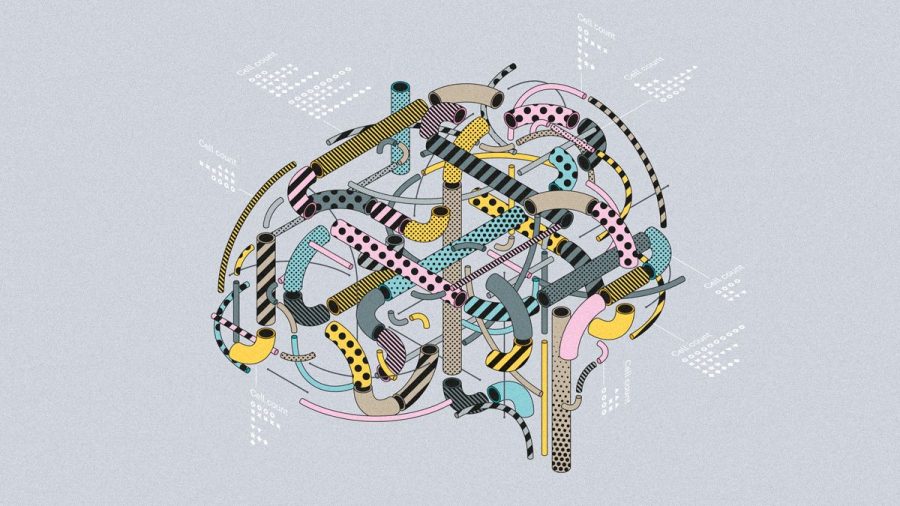Brain Maps – Neurogeography
March 18, 2022
Science is no stranger to the fact that the brain is the most complex, diverse organ in the human body. Neuroscientists and physicians are continuously acquiring new knowledge on this marvelous work of living tissue. As modern-day technology develops at record-breaking speeds, new projects and studies are being performed to further our understanding of the human brain, as well as discover new ways in which physicians can tackle neurological diseases.
In a way, the brain is considered a geographical landscape fit with various cells, pathways, and circuits that can be mapped out to gain a more objective view of all its interdependent interactions. The way that scientists have applied this concept within anatomical and physiological contexts is through brain mapping. Simply speaking, brain mapping is a scientific approach to study the form and function of the brain through the use of various imaging, molecular, and technological techniques to gain the most accurate picture of the brain’s many traits and idiosyncrasies. In 2013, the largest brain mapping project was born: the BRAIN (Brain Research through Advancing Innovative Neurotechnologies) BICCN (Initiative Cell Census Network) bolstered by the US government and European Commission. While the BRAIN BICCN has various goals in mind, its humanitarian objective is to succeed in “building tools that target particular cell types and circuits relevant to disease, which will help to test hypotheses about brain function and to develop therapies” (Abbott). An important thing to note is that beyond the health-benefiting characteristics of this project, the BRAIN BICCN will provide the framework for future neurological research in order to better understand human and animal interaction.
The BRAIN network aims to accomplish this grand feat through the collection of various types of neurological data. This involves collaboration amongst scientists surrounding “a variety of different large-scale data sets to better define brain cell types, analysing single-cell transcriptomes, chromatin accessibility, DNA methylomes, morphological characteristics and electrophysiological properties in combination with precise anatomical locations” (Krzysztofiak). What this means is that neuroscientists are gathering data on every detail involved in the function and genetic composition of numerous kinds of brain cells. The complex processes involved in creating these brain maps takes thorough examination and observation of brain cells at various levels. This means “neuroscientists also need to know how each of the roughly 1,000 types of cell thought to exist in the brain speak to each other in their different electrical dialects” (Abbott). The BRAIN’s ambitions are set quite high, but with clear objectives, innovative ideas, and the brilliant minds behind the network, they are sure to make life-changing advancements and discoveries in the field of neuroscience.
Although fairly new, the project has already accomplished great feats as they “have made maps such as these for the worms and fly brains, and for tiny parts of the mouse and human brains” (Abbott). The researchers are first applying their mapping techniques to the brains of much smaller animals, but have already made progress in human neurological settings as well. The project leads describe that the “ultimate goal is to build an observatory that can integrate data from all these projects into one grand, unified picture” with the hope of “hacking the brain’s circuits to remedy brain disorders” (Abbott). It’s a beautiful realization that the scientific community is working to utilize various technological advancements to aid in benefitting the medical field through the means of brain mapping. Mapping humanity’s most complex organ will always be an ongoing feat, but more research and funding going toward this endeavor will assure that the brain becomes far more understood than before.
Works Cited
Abbott, A. (2021, October 6). How the world’s biggest brain maps could transform neuroscience. Nature News. Retrieved March 18, 2022, from https://www.nature.com/articles/d41586-021-02661-w.
Mayer -, K. (2021, June 23). Brain Maps may reveal the origins and paths of neurological dysfunction. GEN. Retrieved March 18, 2022, from https://www.genengnews.com/insights/brain-maps-may-reveal-the-origins-and-paths-of-neurological-dysfunction/.
Nature Publishing Group. (n.d.). Brain Initiative Cell Census Network – Motor Cortex. Nature news. Retrieved March 18, 2022, from https://www.nature.com/immersive/d42859-021-00067-2/index.html.



